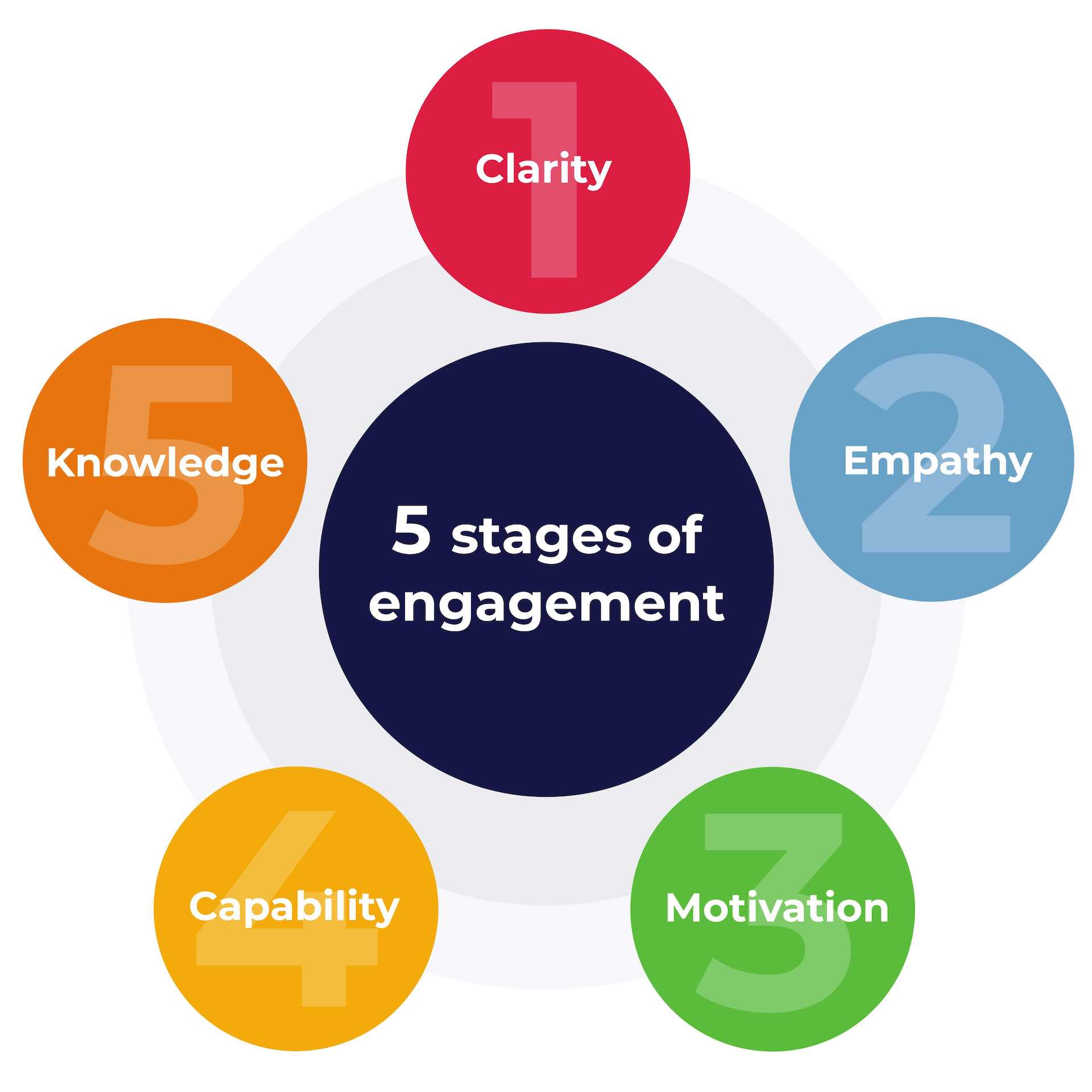M&A Integration: Align Employees Around Purpose, Mission, & Values

An M&A deal may look impressive on paper but unless leadership can capture the hearts and minds of employees moving forward, it faces a daunting challenge that many teamsstrugglewith. Developing a “stronger together” narrativebased on purpose, mission and valuescan impactemployees’ buy-in.
You may have noticed in a recent post, Purpose, Mission, Values—Building Inside Out,that we’re big believers in the idea that the best brands are built from the inside out. In the post you see how Finch Brands cultivatesour own brand foundation.We oftenhelp brands craft an internal narrative based on the WHY of the brand.
Why does the company exist? Why would someone want to work with or for the company? Why is it important or valuable, what the company is doing in the world? Doing this for one company is a challenge. Now imagine trying to do it for two companies coming together in an M&A scenario?
A big part of the complexity of any merger or acquisition is the emotional tumult it can produce. Smart leaders proactively manage these emotions and, in the process,better position the M&A for early and ongoing success.
Creating a new company requires a new “stronger together” narrative
The failure rate for mergers and acquisitions (M&A) stands between 70% and 90%. Often, much of the attention is focused on the upfront end of mergers and acquisitions. Meaning, the numbers. What can get missed in all the crunching of numbers and in the synthesis of hard data is the human impact the M&A effort is having on the employees of both companies.
Being able to successfully bring together two distinct cultures – around a single purpose, mission and set of values – is at the heart of an M&A deal. Taking the right steps to unify leadership, define purposeful change, and set expectations for employees can serve as great stage setters in the M&A effort.
A carefully crafted change-narrative establishes why the companies came together, what the change seeks to accomplish in the world, and the benefits that will be created for employees who make the transition.
Overcoming human nature: why people naturally resist change

Mergers or acquisitions can be the most complex of change moments for any company. The event triggers emotions that, left unchecked, can undermine the progress of a deal, or worse, generate a cloud of negativity that is difficult to neutralize once manifested.
In our experience, we’ve come to recognize distinct components along this emotional continuum that need to be identified and addressed at each point of the journey. As you see in the example below, the continuum consists of three stages. They are endings, transitions, and new beginnings. These mark the journey that every employee must navigate. Within this journey, there is a set of emotions that affect the way people see the world at any given time. From initial shock, denial, and depression through experimental, decision and engagement.
There are five keys to engagement and ways to approach guiding employees on their journey. For instance, at early stages of shock and denial, it is recommended that you communicate in ways that demonstrate clarity and empathy.
The five stages of engagement in an M&A event:

- Clarity — Speak in clear terms that minimize gray areas or misinterpretation of information that is being shared. Avoid ambiguity.
- Empathy — Relate to employees in a way that demonstrates you understand what they’re thinking or feeling at any given point of the journey
- Motivation — Appeal to employees’ sense of the future and speak with positivity, energy and enthusiasm about the possibilities ahead
- Capability — Provide information and tools that equip employees to be successful
- Knowledge — Enable employees to become more knowledgeable, comfortable and in control of their situation. Knowledge instills trust and confidence.
Given the current climate and attention to the emotional well-being of employees, recognizing the value of this continuum is critical to employee morale and level of buy-in.
Aligning companies around a shared purpose, mission and set of values serves as a strong foundation upon which the post-M&A brand can be built. One that reflects the combined strengths, value proposition and vision of the new entity. It also helps allay fears and anxiety, and projects a clear promise of the future that employees can rally around.
Articulating your North Star as purposeful, positive change
Our purpose is our North Star. It answers ‘why’ we do what we do and what we are working towards. It shapes the future of who we are and what we will become. A greatbrandpurpose starts from within and is communicated clearly and unequivocally so teammates feel connected and engaged.
There’s meaning in the mission
Our mission informs our daily decisions and allows us to live into our Purpose. It is a roadmap that keeps us focused on what we want to achieve, who we want to support and how we can make constant progress towards our purpose. This is where the elements and attributes that drive our company and distinctiveness live.
You are what you believe: crafting your brand values
If Purpose is ‘why’ and Mission is ‘how’, our Values reflect ‘how we do it’- and they keep us aligned. These action-oriented philosophies elevate the attitudes and behaviors that unify a work environment and make all the differences to our culture and performance. We establish our brand Values as behaviors that help us accomplish our Purpose and Mission – they are the heart and soul of what life is like at work and in our client relationships.

Amazon’s 2017 acquisition of Whole Foods was met with a lot of fanfare. The deal would allow Amazon to grow beyond e-commerce and collect significant shopper data, while Whole Foods could lower its prices and scale up after its recent declines in sales. But a year later, stories of Whole Foods employees crying on the job over Amazon’s changes have begun circulating, and some workers have even taken steps to explore unionizing. The two companies failed to investigate their cultural compatibility before merging, and now they stand on a fault line researchers called tightness versus looseness…To avoid the pitfalls experienced by Amazon and Whole Foods, companies considering merging should: (1) Prepare to negotiate culture from the start and identify areas for compromise. (2) Construct a prenup that outlines their integration plan. (3) Make sure everyone across both organizations understands what changes will be made and why they will be made. (4) Embrace trial and error. –Harvard Business Review, October 02, 2018
Become champions of purposeful change
A purpose statement makes clear what your organization cares about and what it is working towards. When introducing the purpose to employees of a newly acquired organization, you can set expectations of what the business stands for and how you expect employees to behave to meet the purpose and bring it to life via customer experience, for example. The primary function of any brand is to tell customers what to expect and employees how to fulfill that brand promise.
Withbrand purpose as your platform, it can simplify and encourage beliefs and behaviors that solidify the organization and helps to build a company culture that is authentic and inclusive.
In order to set the right footing, leaders must remind themselves of what they stand for as an organization and what their responsibilities are at the helm. With this level of internal commitment and clarity of mission in place, leaders can share consistent messaging and demonstrate aligned actions in support of their purpose.
We believe that the best brands — including post-M&A brands – are built from the inside-out. A highly engaged and informed team is motivated to deliver a compelling customer experience. And that starts with a strong foundation. When the team’s sense of purpose is aligned with the brand’s purpose, you have what it takes to truly ‘live the brand.’
When a company’s Purpose, Mission, and Values are thoughtfully crafted and well- socialized, teammates’ heartbeat and the company’s pulse are synchronous. This allows everyone to work in flow and reduce the friction that impedes breakthrough thinking and positive energy.
The goal of a company’s Purpose, Mission, and Values is to ensure everyone feels a resonant “why” that underlies the “what” we do each day. They become a roadmap to help organizations track their progress and achieve goals – and guide decisions, inspire employee engagement, and drive business performance.
Building a strong foundation based on shared purpose, mission and values is a guiding principle for the cultural integration process. It provides an ethos that leaders can get behind and clearly defines what the new entity stands for and where it is headed.
It makes clear to employees, new and old, the trajectory moving forward.
By committing time and energy to get the fundamentals together and building an undeniable “stronger together” narrative, you’ll be better positioned to manage the human side of the M&A process as well as the financial and operational sides of the story.
Finch Brands is a real-world brand consultancy that specializes in insights, strategy, and design, and has helped dozens of clients build successful post-M&A brands. We help brands of all shapes and sizes win when it matters most by helping them own the change moment.








